Rating of the best models of gas analyzers for 2022
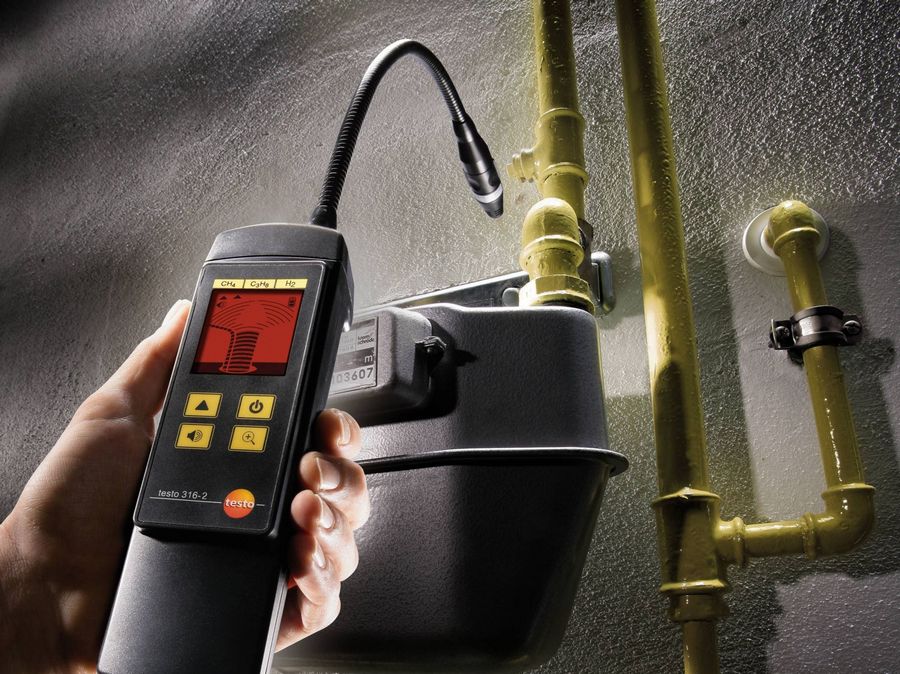
At any communal facilities, in industrial production, in mines and even in homes, there may be increased risks of getting poisoned by harmful gaseous substances. This situation is quite common, so it is necessary to constantly monitor the quality of the air inhaled by people and check for the presence of harmful gases in it.
More recently, people for the above places used various home-made designs to determine the presence of dangerous gas mixtures. In the modern world, circumstances have seriously changed and special analyzers have been used everywhere, which in the shortest possible time are able to determine the presence of harmful substances in the air and send an appropriate signal to a person about this.
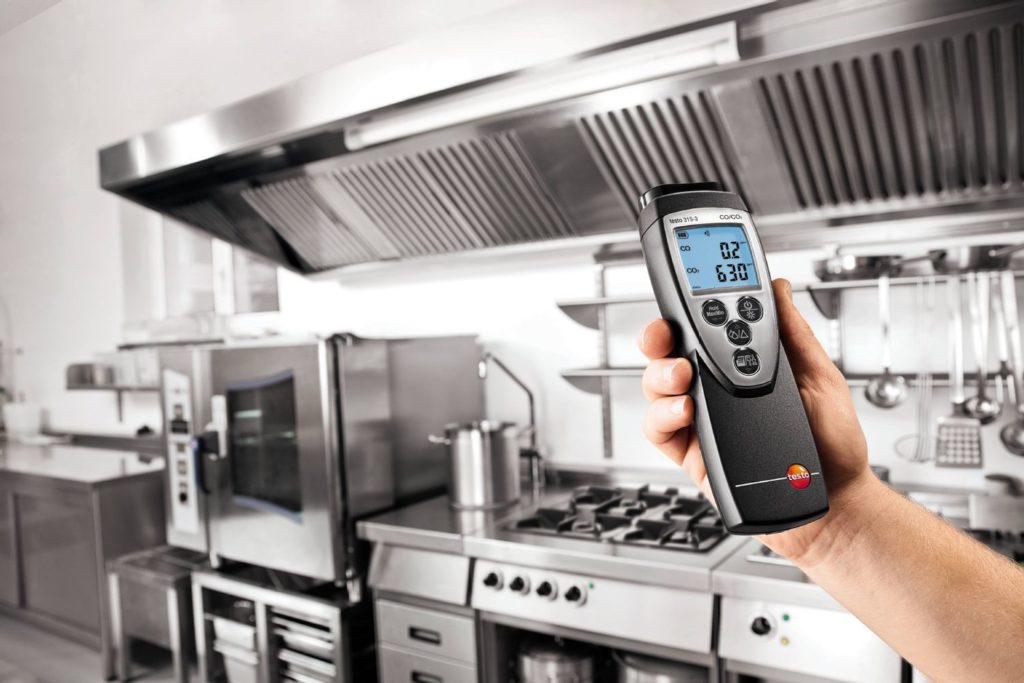
Content [Hide]
- 1 Gas analyzer device
- 2 Using the device for the analysis of gas mixtures
- 3 Classification of gas analyzers
- 4 Classification according to the principle of action
- 5 Problems of competent choice
- 6 Rating of the best models of gas analyzers for 2022
- 7 Finally
Gas analyzer device
Almost all such devices have three key elements in their design - a detector (transducer), a measuring part and a power source. As for the detector, it can be conditionally represented as an ultra-sensitive module capable of detecting the presence/absence of certain vapors in the air mixture, which is signaled to the operator accordingly. This sensor can be based on different principles of operation, depending on the method of fixing the chemical. The signal processing itself is performed by the measurement module. Thanks to him, household apartment gas analyzers are able not only to register the presence of a particular substance, but also to reflect its specific value visually (for example, display a numerical value on the display). And if we talk about the latest models of the devices in question, then they can decompose the analyzed substance into its component parts and display each specific value.
For the implementation of continuous / autonomous operation, the design of the devices provides for different power sources.It can be AA and AAA batteries, rechargeable batteries, or it can be powered from the mains. Thus, there are both portable and stationary models.
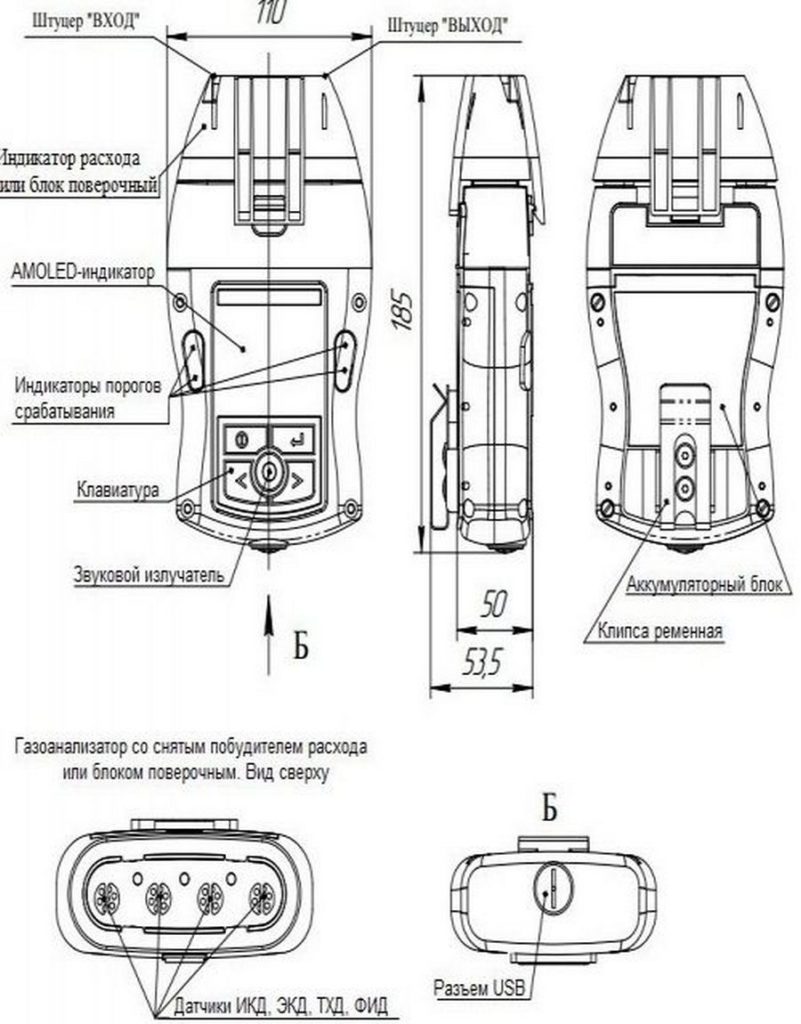
Using the device for the analysis of gas mixtures
The devices under consideration are high-tech and high-precision measuring equipment, intended for the analysis of components entering the atmospheric air, and also capable of determining the qualitative and quantitative composition of gas mixtures. The devices are equipped with special sensors that indicate the excess of the level of hazardous components in the air. As a rule, for the full operation of these devices, auxiliary equipment is also required, which, for example, will create the necessary pressure (compressors), and if harmful substances are detected, it will automatically clean the air from tar, dust, etc.
With the help of gas analysis devices it is possible to produce:
- Ecological air control, i.e. monitor the atmosphere to prevent man-made disasters and respond in a timely manner to the fact of their occurrence (for example, determining the increase in the concentration of dangerous carbon dioxide or other harmful substances).
- Control the current atmosphere in the working area, maintaining the system for ensuring labor protection and industrial safety. This is especially true for large garages, boiler rooms, deep wells, as well as in tunnels and other underground facilities. They are intended not only to determine the presence of harmful substances, but at the same time are aimed at eliminating their influence (for example, automatic activation of ventilation).
- Monitoring of industrial emissions during the implementation of technological processes at energy, metallurgy, petrochemical and cement industries. However, in these industries it is necessary to know the permissible harmful composition of the gas environment and regularly measure the content of hydrogen, oxygen, methane, sulfur, nitrogen, etc. Industrial analyzers are considered the most powerful because they can monitor up to 50 different components at the same time.
- Analysis of the operation of gas turbines, furnaces and burners, as well as boilers - any equipment that uses a fuel combustion mechanism.
- Detect gas leaks during installation of a gas pipeline or pipeline waterproofing.
- Determine the concentration of gas in the liquid, which is necessary for water purification procedures. Usually, for these purposes, a method of analyzing oxygen and its partial pressure is used to find out its total content in the liquid. Scope of use - aeration and wastewater treatment plants, laboratories for water quality control.
- Analysis of vehicle exhaust gases in the field of auto diagnostics. Such equipment is capable of measuring 4 components of the gas mixture - O2, NOx, CH, CO2. From here, exhaust toxicity will be calculated and, accordingly, it will be possible to determine the general condition of the car, find out the problems and malfunctions of the internal combustion engine, as well as the ignition and fuel circulation systems;
- Residential air quality control - helps to identify sources of leakage at the household level;
- Monitoring alcohol vapors exhaled by a person will help determine the level of alcohol in the blood.
Classification of gas analyzers
The devices considered in this article have many modifications and can be classified into several categories at once.
By functionality:
- Indicator - they are able to issue a qualitative assessment of the gas substance by the presence of a substance to be controlled. The data will be displayed by several dot indicators. When all indicators are fully lit, this means that there are too many controlled components, and when one or two, this means a normal level. Leak detectors can also be attributed to this group - they are equipped with special probes (or samplers), thanks to which the place of leakage in the pipeline is detected.
- Signaling - they have one or more signals on the thresholds. Their optical indicator elements are triggered visually or with sound when the concentration of a harmful mixture reaches a threshold.
- Directly gas analyzers - they are adapted to give an estimate of the concentration of a gas mixture by its mass or volume. They are usually supplemented with threshold equipment equipped with a digital / analog signal or even a printer.
By design features:
- Stationary samples - overall and massive, they are designed for uninterrupted operation. They are used to control the working area of an industrial enterprise, register the degree of gas contamination both in the room itself and in the environment. This equipment is aimed at studying the concentration of gases, and in particular - their maximum permissible values. They have integrated threshold sensors, which, when there is a threat of exceeding the limits of gas contamination, turn on the siren, start automatic ventilation, and close the special shut-off valve.
- Portable samples are slightly smaller devices that are easy to transport from one object to another and simply enough to start in working mode. They are used in the oil and gas industry, utilities, as well as during environmental monitoring and laboratory research. In most cases, they are used by the Ministry of Emergency Situations, sanitary supervision, as well as companies for the installation and commissioning of air conditioning, ventilation and heating systems. Some models are used in civil engineering by departments of industrial safety and labor protection of organizations.
- Portable samples - they are distinguished by compactness and lightness. They are used in the field of production, transportation, oil and gas processing, as well as in water utilities, tunnels and wells. They can be found at gas stations and other places where it is necessary to ensure the personal safety of employees. They are also used by ecologists at field work during monitoring of the air composition in residential areas or at industrial enterprises. These devices are equipped with visual and audible alarms, and can be supplemented with an infrared port (or other modules for wireless data transmission) in order to send the results to the "mother" station.
Separately, it is worth mentioning flue gas analyzers - they are designed to control the optimization of combustion processes, while simultaneously making an inventory of emissions into the atmosphere. Used in rooms with industrial furnaces, in boiler rooms. They are also able to detect the amount of carbon monoxide in a confined space, or to determine the location of gas leaks.
By the number of measured components:
- Industrial narrowly focused (in a specific industry) are usually adapted to identify only one or two components;
- Automobile - without fail four (but can be more);
- Professional laboratory models can determine up to 50 components.
Classification according to the principle of action
Both household and professional models of gas analyzers can be both manual and automatic. Among the former, absorption chemicals are more widespread - in them, the components of the gas-air mixture are absorbed with the help of special reagents in turn. Automatic - are able to measure the physico-chemical or physical parameters of a gas substance (its individual components) simultaneously.
Manual models have not been used by the mass user for a long time, the market is almost completely conquered by automatic devices, which can be divided into three groups according to the mechanism of operation:
- The action is based on the methods of physical analysis and includes additional chemical reactions. These models are able to determine the change in pressure or volume of a gaseous substance based on chemical reactions with its individual components.
- The action is based on the methods of physical analysis and includes additional thermochemical, photocolorimetric, electrochemical processes. Thermochemical ones are based on measurements of the efficiency of the thermal combustion reaction (catalytic oxidation). Electrochemicals can determine the concentration of substances in a substance based on the conductivity values produced by the electrical electrolyte that has absorbed the substance. Photocolorimetric methods are based on the change in the color spectrum of certain substances in the process of their interaction with the analyzed elements.
- The action is based on exclusively physical methods of determination (optical, thermoconductometric, thermomagnetic). Thermal conductivity meters measure the thermal conductivity of a gaseous substance. Thermomagnetic are able to determine the oxygen concentration, where oxygen will have an increased susceptibility to magnetic fields. Optical ones are based on measurements of optical density, emission / absorption spectra of a gas-air mixture.
Each of the above methods has its advantages and disadvantages, however, modern manufacturers of gas analysis devices most often use the electrochemical principle of operation in their designs, as the simplest, cheapest and most multifunctional. But this method also has its drawbacks, namely:
- Low selectivity and fidelity of the results obtained;
- Short service life of sensitive elements;
- High susceptibility to the negative effects of the analyzed impurities.
Problems of competent choice
Before purchasing a device for gas analysis, it is necessary to take into account the level of protection of its case and switching capabilities in general. Independent and stationary sensors should not be required to communicate with controllers or computers. In cases where you need a household appliance equipped with a gas supply shut-off module, then the presence of ports such as RS-232 (for switching with a computer) and a control relay will be needed. In particular, a relay will be needed so that the device is properly integrated into complex security devices (for example, in a smart home system). Then the device will be securely connected to the gas system valve regulators, siren and exhaust hood.
The level of protection of the housing is indicated by the European standard IP.Household models for residential premises usually have an IP20 protection class, which indicates high-quality resistance to moisture and dust. The most wear-resistant models have an IP67 protection class - they successfully resist aggressive chemical environments, can be completely immersed in water, etc.
The following parameters will also become useful guidelines:
- Number of types of determined harmful substances;
- Air sampling method - it can be automatic, using a compressor or manual (i.e. forced).
- Stationary or portable placement - everything will depend only on the conditions of future use.
At the same time, you should pay attention to the maximum total load of the device - i.e. this refers to the time between failures (quality and durability of sensors, pumps, signaling devices, etc.). Separately, it is necessary to inquire about the steam circulation system and its maximum load.
If you choose an apparatus for determining the flue (exhaust) gases of boilers with fuel combustion, then the easiest way is to be guided by the principle - “the more expensive, the better”, because this category is the most common and manufacturers are trying to make it as functional as possible. In all other cases, for example, when choosing for industrial purposes, you need to start from the number of functions: a large device for monitoring gases in a smelter room is unlikely to be needed with all its large set of functions in a woodworking shop. Accordingly, it makes no sense to overpay for the deployed functionality.
Separately, one should take into account an important economic factor, namely, the price of annual maintenance.It is calculated as the total cost of periodic technical inspections, replacement of consumables, and ongoing sensor calibration.
In any case, before buying without fail, the buyer must ask the seller for certification documentation:
- Certificate or certificate for the type of measuring instrument;
- Instruction describing the means of accounting and control;
- Verification method;
- Methods for performing measurements.
IMPORTANT! The measurement of gas emissions is the area of state control/supervision and without the availability of appropriate certification measurements, the device cannot be used!
Rating of the best models of gas analyzers for 2022
Budget options
3rd place: "BG 2202 Brennenstuhl 1290460"
votes 0
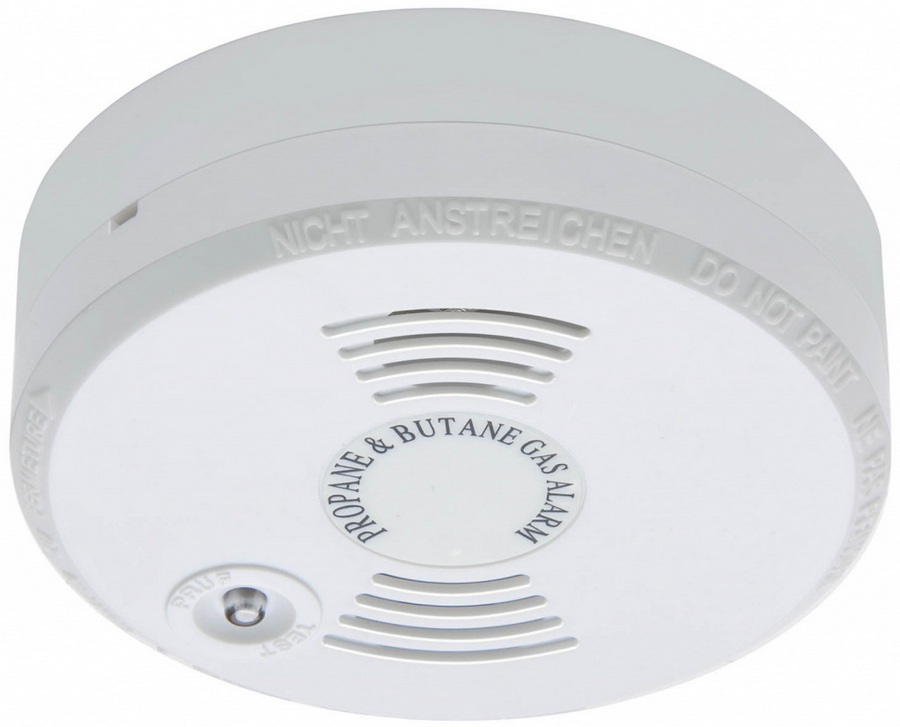
Stationary model of ceiling type. At first glance, it may seem that it is intended only for domestic use, but it can also cope with an increased concentration of analyzed substances, so it can be installed even in a boiler room. Works from a network of 220 V. The alarm system is available both sound, and visual. It is positioned by the manufacturer as a model for rooms with a massive presence of people. Price - 2000 rubles.
- Excellent audible/visual alarm;
- Budget price;
- Ease of installation.
- Low threshold for detectable dangerous concentration - from 40%;
- Doesn't work when power is off.
2nd place: "Mastech MS6310 65299"
votes 0

Despite the fact that the device is made by a Chinese manufacturer, its design contains quality parts. In addition to the main functions, it has the function of detecting gas leaks in the pipeline. Made in the form of a small portable model.Powered by four AA batteries (9 hours of uninterrupted operation). It is characterized by high speed of operation. Sampling is carried out by means of a flexible probe. Price - 4500 rubles.
- Rugged housing;
- Long comfortable probe;
- Easy to manage.
- No display.
1st place: "MEGEON 08005"
votes 0
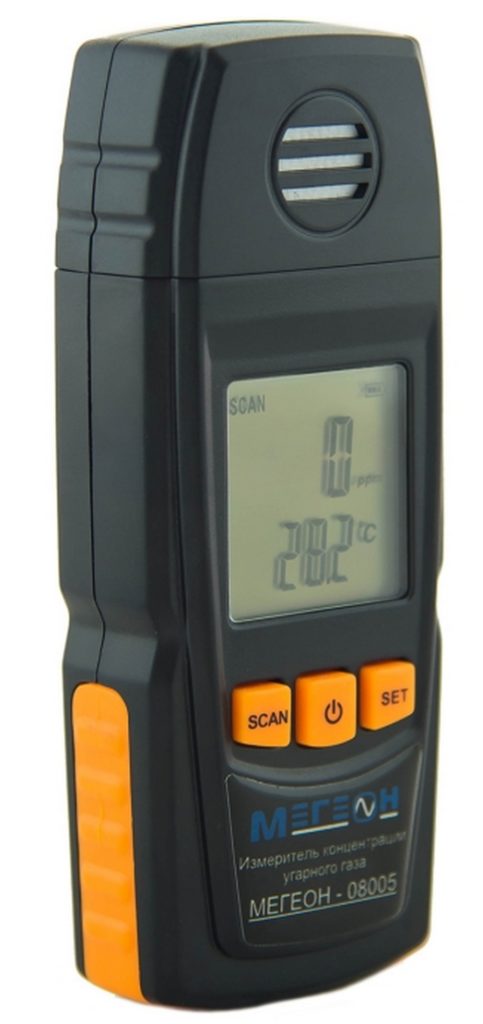
A good sample from a domestic manufacturer. Easy to operate, fits perfectly in the hand, has a large display and low weight. Automatically measures ambient CO2 and even air temperature! It is characterized by relatively high measurement accuracy and increased sensitivity. Runs on two AA batteries. Positioned as a device for frequent use. Price - 9100 rubles.
- Light weight;
- Power source charge indicator;
- Multifunctional.
- Long response time - about 60 seconds.
Middle price segment
2nd place: CEM DT-802 481769
votes 0

Stationary version, designed exclusively for the determination of carbon monoxide. It can be placed both on a stand and can be mounted on a wall. In the dark, you can use the backlight of the screen. Due to its small size, with the help of an extension, it can be used as a leak trap. The display contains indicators of temperature, gas contamination, a calendar and a clock. Extremely fast response time - only 2 seconds. Price - 9700 rubles.
- Informative display;
- Versatility;
- Small dimensions;
- Backlight.
- Powered only by 220 V.
1st place: "Testo 317-2"
votes 0

An excellent example that can work even in sub-zero temperatures.The model is portable, it is characterized by ease of operation and an informative display with night illumination function. The product comes in a branded case, so the safety of storage / transportation does not raise any questions. Possesses the increased accuracy. Price - 14,000 rubles.
- Works at sub-zero temperatures;
- There is a case for storage and carrying;
- Convenient to use.
- 2 batteries last only 4 hours.
Premium segment
2nd place: "MEGEON 08002 k0000017420"
votes 0

A rather heavy version (almost 300 grams), however, with increased accuracy. Works from the accumulator. It has a flexible probe, through which it is very easy to take measurements. In case of exceeding the specified norms, it signals both sound and light. The average response time is about 10 seconds. The kit comes with not just a cover, but a very convenient case with soft inserts. Despite the Russian assembly, sensitive sensors in the design are used from a European manufacturer. Among the buyers deserved the characteristic "Best value for money". The cost is 14,000 rubles.
- Dual notification - sound and light;
- Work from the accumulator and from a network;
- Extended operational resource.
- Not found (for its segment).
1st place: "Testo 316-1"
votes 0
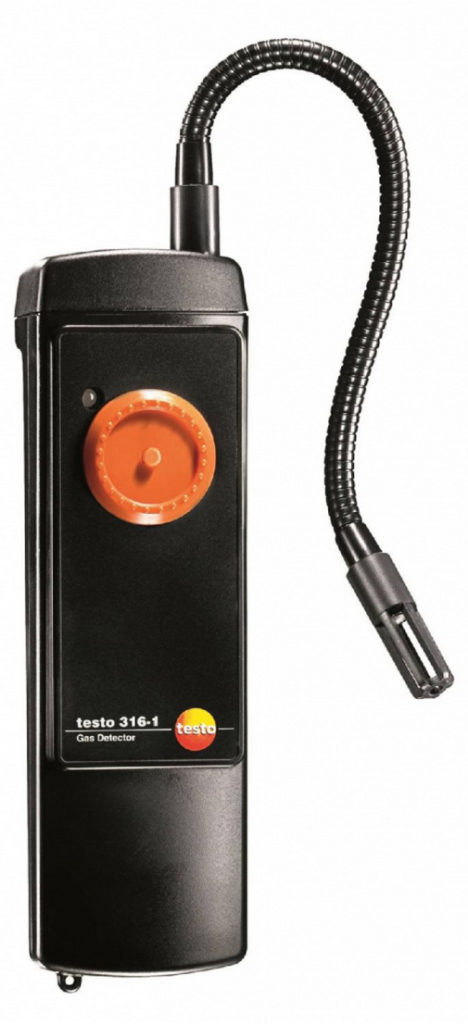
An extremely high-precision device, which increases its price by orders of magnitude, even despite the lack of a display. The battery life is enough for 5 hours of continuous operation. The response time is about 5-30 seconds. Able to identify up to 5 harmful components. The indication is made in the form of two signal lights: yellow - "attention", red - "potential danger". Equipped with a flexible probe.Price - 20,000 rubles.
- Rugged housing;
- Convenient probe;
- Very high accuracy.
- Overcharge.
Finally
After acquiring a measuring device, you should correctly calculate its wiring diagram (if it is not portable). Its sensing elements must work accurately and efficiently, for which it will be necessary to create certain environmental conditions. From this it can be seen that the characteristics of the working room must be appropriate. For example, an apparatus for measuring household gas leaks should be placed away from windows, ventilation or exhaust ducts. The target testing environment must be protected from external factors and be stable.
new entries
Categories
Useful
Popular Articles
-

Top ranking of the best and cheapest scooters up to 50cc in 2022
Views: 131650 -

Rating of the best soundproofing materials for an apartment in 2022
Views: 127689 -

Rating of cheap analogues of expensive medicines for flu and colds for 2022
Views: 124518 -

The best men's sneakers in 2022
Views: 124031 -

The Best Complex Vitamins in 2022
Views: 121938 -

Top ranking of the best smartwatches 2022 - price-quality ratio
Views: 114979 -

The best paint for gray hair - top rating 2022
Views: 113394 -

Ranking of the best wood paints for interior work in 2022
Views: 110318 -

Rating of the best spinning reels in 2022
Views: 105328 -

Ranking of the best sex dolls for men for 2022
Views: 104365 -

Ranking of the best action cameras from China in 2022
Views: 102215 -

The most effective calcium preparations for adults and children in 2022
Views: 102011








